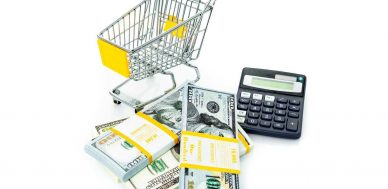Spiking Inflation Ahead, Don’t Get Complacent
Mark my words: when this coronavirus pandemic is over, the next biggest problem we are going to face is spiking inflation in the U.S. (and globally).
These days, inflation isn’t really an issue on anyone’s mind, but don’t get too complacent. It could impact consumer buying power, business investments, and investment returns.
How does inflation happen? In the most basic terms, inflation is when the general level of prices in an economy increases. It happens when there’s too much money supply in an economy and consumers are buying things.
You see, during this pandemic, central banks and governments around the world have gone to new extremes. Major central banks have printed a lot of money, and governments have spent with two hands.
Just look at the chart below to give you some perspective. It plots the Federal Reserve’s balance sheet.
(Source: “Assets: Total Assets: Total Assets (Less Eliminations from Consolidation): Wednesday Level,” Federal Reserve Bank of St. Louis, last accessed July 7, 2020.)
Just prior to the pandemic beginning, the Federal Reserve’s balance sheet stood at around $4.0 trillion. Now, it’s at $7.0 trillion and increasing. This represents an increase of 75% in the Fed’s balance sheet in matter of few months.
Keep in mind, the $3.0 trillion that the Fed printed went to banks and the U.S. government.
Don’t just stop here.
This $3.0 trillion isn’t the only thing that entered the U.S. economy. The federal government also spent a lot of money. In March, the U.S. government passed a bill worth $2.0 trillion, and there could be another one worth a similar amount sooner rather than later.
Mind you, the U.S. national debt has surpassed $26.0 trillion, and by the time this is all over, don’t be shocked if it’s over $30.0 trillion.
Now, think globally as well: it wasn’t just in the U.S. that central banks and governments teamed up to fight the pandemic. Almost every country impacted by the virus did it and continues to do so.
In Canada, for example, the response by the federal government and the central bank was so big that consumer insolvencies actually declined, and subprime borrowers aren’t defaulting at the moment. (Source: “Subprime Canadian Borrowers Are Weathering the Crisis Just Fine, Thanks,” Bloomberg, July 6, 2020.)
When Will We Start to See Higher Inflation?
Dear reader, we are still in the midst of the pandemic. And as it stands, it seems like COVID-19 cases around the world are actually growing at a faster pace than a few months ago.
I believe that 2020 will be the year when we get to hear about a lot of deflation, prices going down. This could be mainly due to decreasing demand. No one may be worried about inflation.
But, as soon as we see some ease in COVID-19 cases, don’t be shocked to see inflation spike higher. The pandemic is not like the financial crisis of 2008–2009. Back then, average citizens didn’t get paid by the government. Now they do.
I think a lot of cash is sitting on the table. Consumers aren’t going out to shop. Once they do, all that money that’s been printed will show up and cause high inflation.
Keep in mind, high inflation is bad. If you see soaring inflation, you will pay higher prices for things you need and want, businesses may face a lot of uncertainty and not invest, and the returns on investment could be much lower than you see on paper.
I reiterate, inflation is going to be a major problem. Be careful.
